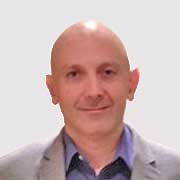A student from Slovakia in Bilbao: studying Spanish and much more
I am a girl from Slovakia who decided to study and learn everything about Spain. I started off at the University of Valencia: Spain stunned me straight away with its beauty and friendly people. I love the Spanish language and culture so I decided to do an internship at Instituto Hemingway to improve my Spanish and learn new things.
Today I will write about what surprised me about Bilbao and the differences between life in Slovakia and Spain.
There are many differences. For example, the people in Spain usually get up and go to bed much later than those who live in the majority of other European countries. I really like the nightlife here, it’s much more vibrant. Each day you have the opportunity to go out and the parties are much more intense. I think that the Spanish know how to enjoy life. Here there are many bars, nightclubs and typical tapas bars. Tapas are little portions of cured meat, cheese and other foods served on a small plate, much like a tasting session. The Spanish also eat much later than the people in my country. Lunch is generally between 1.00pm and 3.00pm, and dinner as at 10.00pm.
It wasn’t long before I found myself in a comical situation here. I wanted to go for dinner with my friends at 6.00pm as is usual in our country and so we looked for an open restaurant for about an hour. We were so hungry we went to a shop to buy a frozen pizza. The opposite thing happened in Slovakia with my Spanish friends who decided to go and eat at 10.00pm only to find that our restaurants close at that time.
In Spain the shops open at 9.00am and close at 8.00pm, not like my country where they open at 8.00am and close at 6.00pm although the food shops are open every day from 6.00am until 8.00pm and the big supermarkets are open 24 hours. Furthermore, in Slovakia we have a big choice of food and the best things are the sweets. Another thing that is different in Spain is that all the shops are closed on Sundays except the Chinese shops where you can buy anything. The most typical thing in Spain is the break which takes place from 2.00pm until 5.00pm.
I think that people in Slovakia are much more reserved than the people here. For example, when I look at a map the people who walk past me very kindly ask if I need help.
And what is Bilbao?
Bilbao is a typical Spanish city which touches your heart immediately. There are many things you have to see here:
Puente de la Merced
In 1937 this bridge was rebuilt on the old one which was constructed by Ernest Hoffmeyer in 1883.
Iglesia de la Merced
An old convent building of San José de la Naja constructed in 1675 and rebuilt in 1750. It was dedicated to the redemption of prisoners. Now completely restored, it is the headquarters of “Bilborock”: a hall for theatre and young music.
Puente de la Ribera
An elegant footbridge with a great iron arch. The work of Pablo de Alzola y Minondo in 1881.
Paseo y Soportales de la Ribera (Arcos de la Ribera)
A walkway with arcades which mark the perimeter of the old Casco Viejo which was declared part of the Conjunto Histórico Artístico (Spanish heritage conservation group) in 1972.
Mercado de la Ribera
A market quare of an eclectic style which presents beautiful architecture with exquisite glasswork. It was constructed by Pedro de Ispizua y Susunaga. It began its activities in 1929 and stands out especially for its excellent selection of seafood. After the floods of the summer of ’83, the interior structures and installations were reformed, cleaned up and modernized.
Iglesia de San Antón
A church which was constructed in a gothic style on the ruins of the old Alcazar (castle) of the city at the end of the fourteenth century. Its slender design forms part of the coat of arms of the town along with a bridge of the same name. It contains a beautiful altarpiece constructed by Guiot de Beaugrant.
Puente de San Antón
The current bridge was constructed between 1871 and 1877 by Pablo de Alzola y Munondo and Ernesto Hoffmeyer. It was build a few metres higher than the old bridge which formed part of the city’s coat of arms.
Estación de Atxuri
The Atxturi train station was built by the architect Leonardo Rucabado from Santander in a regional Basque style in 1883. Its lines go along Eusko-Trenbideak until Donostia-San Sebastian and Gernika-Baremo among other stations.
Iglesia-Convento de la Encarnación
An old Dominican convent. It was built at the beginning of the 16th Century with a gothic interior and a Renaissance facade. It contains various sepulchral niches with genealogical coats of arms.
Museo de Arte Sacro
The museum of sacred art is situated in the cloister of the Convento de la Encarnación and displays religious artwork from the Basque region in the form of ornaments, sculptures and paintings from the Romanesque age to the present day. Here there is also a magnificent collection of silverwork.
Casa Natal de Miguel de Unamuno
A plaque at 16 Calle de la Ronda states that this is the birthplace of the distinguished universal thinker, poet, novelist and professor, Miguel de Unamuno, born on 29th September 1864.
Portal de Zamudio
A gate which used to close Calle de la Ronda which was destroyed in 1573.
Catedral de Santiago
The Cathedral of Santiago is dedicated to the apostle who has been the official patron of Bilbao since 1643. It was constructed at the end of the 14th century. It is built in a gothic style and has three naves. The cloister is small but has a beautiful, gothic design. It achieved the rank of Cathedral in 1949. Its tower and main facade is the neo-gothic work of Severino de Achúcarro and was completed in 1887.
Plazuela de Santiago
In the centre of this square there is an elegant fountain designed by Luis Paret in the time of Carlos III. On the highest part of the fountain there is an inscription: “Por el bien público” (For the good public). The square is embellished by a group of 14th Century houses just opposite the facade and tower of the cathedral. To the side there is a large atrium which is closed nowadays by a gate.
I have begun life in a new world with new ways of living and I have to adapt one day at a time.
Martina Hojčová



 English
English Español
Español Deutsch
Deutsch Français
Français Italiano
Italiano Ру́сский
Ру́сский 
